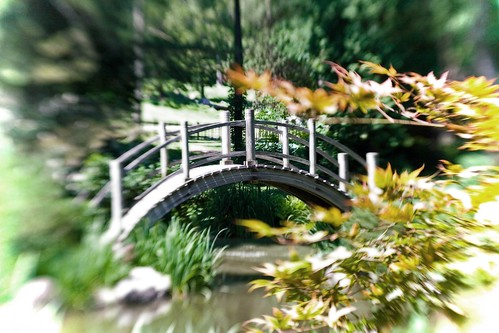Garden design has been an important art in Japan for many centuries. Often thought of as tranquil oases to allow people to escape the stresses of daily life, Japanese gardens can be designed to serve a variety of purposes, from recreational pursuits to holding tea ceremonies. Kaiyu-shiki, or strolling gardens, are meant to be viewed while walking through it, following paths that show specific features. Uneven surfaces cause the viewer to look down at certain points, and eye catching features are often located above them-this is the Japanese landscape principle of "hide and reveal".
Although often differing in overall design, several features are often used in traditional Japanese landscaping. Water features are very common, often containing a small island. A stone lantern is often tucked away near the water, and a small bridge or stepping stones leading to the island complete the picture. Small pavilions are usually provided, and the gardens are often enclosed by a fence or hedge. Green plants predominate, as muted green shades are typical in traditional Japanese landscape, but brightly flowering plants are also used for contrast. In Japanese gardens in the West, traditional plants are used as much as local climate allows, and plants such as the sugar maple offer seasonal color.
This particular garden is in Geneva, Illinois. Originally installed in 1909 by Colonel George Fabyan, and is an original feature of the Fabyan estate. It features all the traditional elements of a strolling garden, and truly is best viewed as you walk through on a warm sunny afternoon.
Friday, October 15, 2010
Reflection and Contemplation
Subscribe to:
Post Comments (Atom)

No comments:
Post a Comment